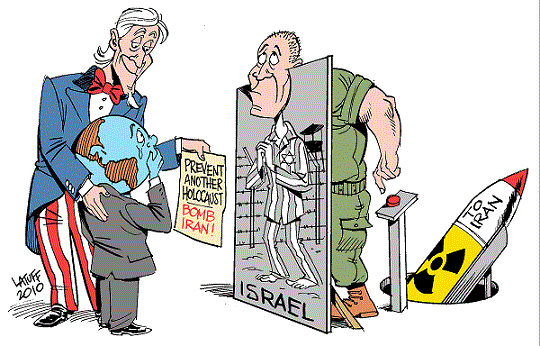111th CONGRESS
1st Session
H. R. 645To direct the Secretary of Homeland Security to establish national emergency centers on military installations.
IN THE HOUSE OF REPRESENTATIVES
January 22, 2009Mr. HASTINGS of Florida introduced the following bill; which was referred to the Committee on Transportation and Infrastructure, and in addition to the Committee on Armed Services, for a period to be subsequently determined by the Speaker, in each case for consideration of such provisions as fall within the jurisdiction of the committee concerned.
——————————————————————————–
A BILL To direct the Secretary of Homeland Security to establish national emergency centers on military installations.
Be it enacted by the Senate and House of Representatives of the United States of America in Congress assembled,
SECTION 1. SHORT TITLE.
This Act may be cited as the `National Emergency Centers Establishment Act’.
SEC. 2. ESTABLISHMENT OF NATIONAL EMERGENCY CENTERS.
(a) In General- In accordance with the requirements of this Act, the Secretary of Homeland Security shall establish not fewer than 6 national emergency centers on military installations.
(b) Purpose of National Emergency Centers- The purpose of a national emergency center shall be to use existing infrastructure–
(1) to provide temporary housing, medical, and humanitarian assistance to individuals and families dislocated due to an emergency or major disaster;
(2) to provide centralized locations for the purposes of training and ensuring the coordination of Federal, State, and local first responders;
(3) to provide centralized locations to improve the coordination of preparedness, response, and recovery efforts of government, private, and not-for-profit entities and faith-based organizations; and
(4) to meet other appropriate needs, as determined by the Secretary of Homeland Security.
SEC. 3. DESIGNATION OF MILITARY INSTALLATIONS AS NATIONAL EMERGENCY CENTERS.
(a) In General- Not later than 60 days after the date of the enactment of this Act, the Secretary of Homeland Security, in consultation with the Secretary of Defense, shall designate not fewer than 6 military installations as sites for the establishment of national emergency centers.
(b) Minimum Requirements- A site designated as a national emergency center shall be–
(1) capable of meeting for an extended period of time the housing, health, transportation, education, public works, humanitarian and other transition needs of a large number of individuals affected by an emergency or major disaster;
(2) environmentally safe and shall not pose a health risk to individuals who may use the center;
(3) capable of being scaled up or down to accommodate major disaster preparedness and response drills, operations, and procedures;
(4) capable of housing existing permanent structures necessary to meet training and first responders coordination requirements during nondisaster periods;
(5) capable of hosting the infrastructure necessary to rapidly adjust to temporary housing, medical, and humanitarian assistance needs;
(6) required to consist of a complete operations command center, including 2 state-of-the art command and control centers that will comprise a 24/7 operations watch center as follows:
(A) one of the command and control centers shall be in full ready mode; and
(B) the other shall be used daily for training; and
(7) easily accessible at all times and be able to facilitate handicapped and medical facilities, including during an emergency or major disaster.
(c) Location of National Emergency Centers- There shall be established not fewer than one national emergency center in each of the following areas:
(1) The area consisting of Federal Emergency Management Agency Regions I, II, and III.
(2) The area consisting of Federal Emergency Management Agency Region IV.
(3) The area consisting of Federal Emergency Management Agency Regions V and VII.
(4) The area consisting of Federal Emergency Management Agency Region VI.
(5) The area consisting of Federal Emergency Management Agency Regions VIII and X.
(6) The area consisting of Federal Emergency Management Agency Region IX.
(d) Preference for Designation of Closed Military Installations- Wherever possible, the Secretary of Homeland Security, in consultation with the Secretary of Defense, shall designate a closed military installation as a site for a national emergency center. If the Secretaries of Homeland Security and Defense jointly determine that there is not a sufficient number of closed military installations that meet the requirements of subsections (b) and (c), the Secretaries shall jointly designate portions of existing military installations other than closed military installations as national emergency centers.
(e) Transfer of Control of Closed Military Installations- If a closed military installation is designated as a national emergency center, not later than 180 days after the date of designation, the Secretary of Defense shall transfer to the Secretary of Homeland Security administrative jurisdiction over such closed military installation.
(f) Cooperative Agreement for Joint Use of Existing Military Installations- If an existing military installation other than a closed military installation is designated as a national emergency center, not later than 180 days after the date of designation, the Secretary of Homeland Security and the Secretary of Defense shall enter into a cooperative agreement to provide for the establishment of the national emergency center.
(g) Reports-
(1) PRELIMINARY REPORT- Not later than 90 days after the date of the enactment of this Act, the Secretary of Homeland Security, acting jointly with the Secretary of Defense, shall submit to Congress a report that contains for each designated site–
(A) an outline of the reasons why the site was selected;
(B) an outline of the need to construct, repair, or update any existing infrastructure at the site;
(C) an outline of the need to conduct any necessary environmental clean-up at the site;
(D) an outline of preliminary plans for the transfer of control of the site from the Secretary of Defense to the Secretary of Homeland Security, if necessary under subsection (e); and
(E) an outline of preliminary plans for entering into a cooperative agreement for the establishment of a national emergency center at the site, if necessary under subsection (f).
(2) UPDATE REPORT- Not later than 120 days after the date of the enactment of this Act, the Secretary of Homeland Security, acting jointly with the Secretary of Defense, shall submit to Congress a report that contains for each designated site–
(A) an update on the information contained in the report as required by paragraph (1);
(B) an outline of the progress made toward the transfer of control of the site, if necessary under subsection (e);
(C) an outline of the progress made toward entering a cooperative agreement for the establishment of a national emergency center at the site, if necessary under subsection (f); and
(D) recommendations regarding any authorizations and appropriations that may be necessary to provide for the establishment of a national emergency center at the site.
(3) FINAL REPORT- Not later than 1 year after the date of the enactment of this Act, the Secretary of Homeland Security, acting jointly with the Secretary of Defense, shall submit to Congress a report that contains for each designated site–
(A) finalized information detailing the transfer of control of the site, if necessary under subsection (e);
(B) the finalized cooperative agreement for the establishment of a national emergency center at the site, if necessary under subsection (f); and
(C) any additional information pertinent to the establishment of a national emergency center at the site.
(4) ADDITIONAL REPORTS- The Secretary of Homeland Security, acting jointly with the Secretary of Defense, may submit to Congress additional reports as necessary to provide updates on steps being taken to meet the requirements of this Act.
SEC. 4. LIMITATIONS ON STATUTORY CONSTRUCTION.
This Act does not affect–
(1) the authority of the Federal Government to provide emergency or major disaster assistance or to implement any disaster mitigation and response program, including any program authorized by the Robert T. Stafford Disaster Relief and Emergency Assistance Act (42 U.S.C. 5121 et seq.); or
(2) the authority of a State or local government to respond to an emergency.
SEC. 5. AUTHORIZATION OF APPROPRIATIONS.
There is authorized to be appropriated $180,000,000 for each of fiscal years 2009 and 2010 to carry out this Act. Such funds shall remain available until expended.
SEC. 6. DEFINITIONS.
In this Act, the following definitions apply:
(1) CLOSED MILITARY INSTALLATION- The term `closed military installation’ means a military installation, or portion thereof, approved for closure or realignment under the Defense Base Closure and Realignment Act of 1990 (part A of title XXIX of Public Law 101-510; 10 U.S.C. 2687 note) that meet all, or 2 out of the 3 following requirements:
(A) Is located in close proximity to a transportation corridor.
(B) Is located in a State with a high level or threat of disaster related activities.
(C) Is located near a major metropolitan center.
(2) EMERGENCY- The term `emergency’ has the meaning given such term in section 102 of the Robert T. Stafford Disaster Relief and Emergency Assistance Act (42 U.S.C. 5122).
(3) MAJOR DISASTER- The term `major disaster’ has the meaning given such term in section 102 of the Robert T. Stafford Disaster Relief and Emergency Assistance Act (42 U.S.C. 5122).
(4) MILITARY INSTALLATION- The term `military installation’ has the meaning given such term in section 2910 of the Defense Base Closure and Realignment Act of 1990 (part A of title XXIX of Public Law 101-510; 10 U.S.C. 2687 note).
-FIN-
Full article by Paul Joseph Watson at Prisonplanet
Did you get all that? Well, you didn't have to. It's pretty clear in the second section that FEMA camps, which have quite obviously existed for a long time (Google REX84), are now legal for any purpose as determined by the Dept of Himeland Security. Including death camps, if the DHS says so!
Combine this with the executive powers created during the Bush administration, and all of the following would be legal:
- Declaring a National Emergency of any kind
- Arresting any American citizen without a warrant, seizing guns, detaining people indefinitely under 'terrorism' charges, which is now defined as, among other things, any act deemed to have the intention of threatening others (ie just about any small-time offence). Read section #802 of the United States Code which was amended by the USA PATRIOT Act.
- Detaining people in FEMA camps 'for their safety' indefinitely
- Declaring the President dictator (which automatically happens in a state of national emergency)
- Even, potentially, killing citizens 'charged' with 'terrorism'.
But most people will, unfortunately, still believe this doesn't exist. It's just a hoax by conspiracy nuts.
Did you know local residents were generally not aware of the Nazi death camps during WW2 that were on their doorstep? Or that most of the Jews, blacks, 'criminals', gypsies, homosexuals, etc. had no idea where the train was taking them? Ignorance is bliss, I guess. That comfortable doubt that government could ever do something so awful. But as the laws stand, they could if they wanted.
Combine this with:
FEMA red/blue/yellow lists, FBI 'terrorist' watch lists
FEMA buys 500,000 plastic coffins, stores them near Atlanta, Georgia
http://www.welfarestate.com/pamphlet/ The infamous FBI terrorism pamphlet. Amongst those who are now terrorists are people concerned with
Who is the terrorist? YOU ARE! Now go to the 'love camps' and the 'fun camps' and remember that government still loves you. Lovely lovely gas chamber!




































.jpg)



2 comments:
They are not "now legal". This is a bill which has come up twice before (in 2005 as H.R. 4112, in the 109th Congress, and again in 2007 as H.R. 1796 in the 110th Congress). In neither case did it become law.
At the moment, this bill has been introduced, but in the ensuing week has not yet become law. It has currently been referred to House committee (well, two of them). I can't tell you what the timeframe will be on this, but while it may become law, it is not there yet.
My bad, yes this is still up for voting.
But the camps have already been in existence for years anyway, with or without legal authority. This would just rubberstamp their policy of mass civilian detention.
Post a Comment